The artwork Environments 12 is a splendid example of how artistic research is able to appropriately respond to how emergent acoustic technologies can generate more profound understandings of nonhuman lifeworlds. I was fortunate to experience the work ‘Environments 12′ new concepts in acoustic enrichment’ in WILD HOPE: Conversations for a Planetary Commons, a group exhibition. The 12th record, ‘Environments 12’, is a vinyl offering to the set of 11 acoustic journeys and also emanates an apparatus that requires embodiment attention to the materials at hand, notwithstanding the choice of finite media that don’t consume in the way that streaming media technologies do and their ecological consequences. A raison d’etre that aligns with a pertinent set of observations depicted in the environmental research of the late Karen Bakker. Who exemplifies this well in her radiant book The Sounds of Life: How Digital Technology Is Bringing Us Closer to the Worlds of Animals and Plants (Princeton, NJ: Princeton University Press, 2022).
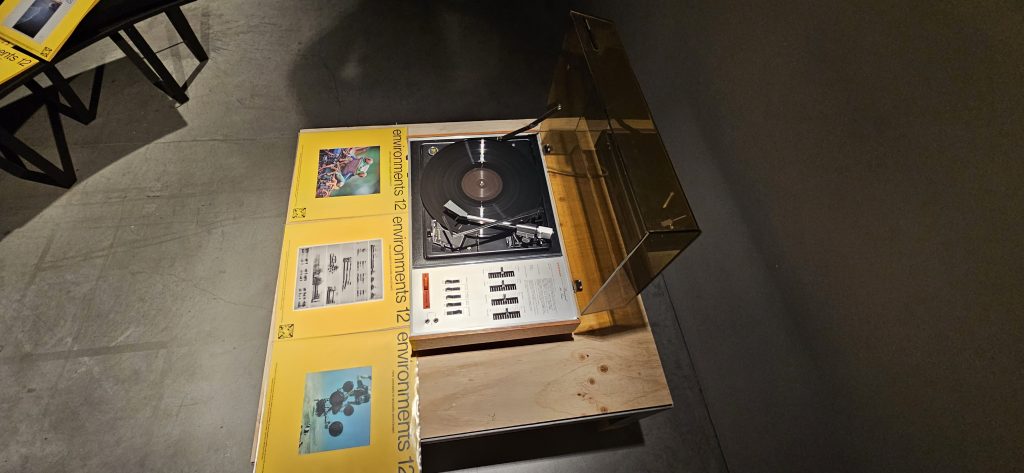
Install shots of Environments 12, 2023. listening environment: 8-channel sound installation, 35 mins (looped); turntable, vinyl record and record sleeves Researched, written and produced: Sean Dockray, James Parker, Joel Stern (Machine Listening).
The pastiche mise en sce´ne of the installation operated as a kind of proof of authenticity. The vinyl record player speaker set was reminiscent of “postdigital DIY as a nostalgic ‘retro’ ” as Florian Cramer has described it and in light of these predilections it is worth repeating now and then.
A 12th “speculative addition to the once-popular Environments series: records released between 1969 and 1979 by the American entrepreneur and composer Irv Teibel, under the aegis of his company Syntonic Research. This series both anticipated and helped bring about a mass-market in mood-altering nature recordings. If you have ever put on the sound of a rainforest or thunderstorm to help you work or get to sleep, or to block out the noise of a busy office, that is partly thanks to Environments.” Researched, written and produced by Sean Dockray, James Parker and Joel Stern (Machine Listening).
The multispecies antiphony (or polyvocality as is the common parlance currently in Australian humanities discourse) and the collaborative nature of artistic research into how emergent technologies such as AI can both enable and threaten ecologically just potentials is satisfying. On the other hand, the work created an awareness of ecological conditions, procedures and interventions. When hearing the vivid soundtrack, at times I wasn’t sure if it was the recording or the environment surrounding my studio where bird songs and other forms of life, nature and synthetic noises infiltrate.
Such cooperation may uncover obscure knowledge about whale communication, particle physics or matter etc., and the predictions spoken of when this will be known by the spectral aesthetic of the Chorus, or “The Clones: made with ElevenLabs”. This leads me to the prominence of the voices as call and response in the poetic inquiry of endurance thread as mutually indexical (evidencing an ecosystem) and heuristic (conveying an awareness). Yet, when I listen to the work, the prevailing register of ‘The Clones’ epitomises that machines can only imitate. This arguably creates a perceptual tension with the distinctive calls ‘a new kind of environment’ or the biomimicry intentionality identified (in my interpretation, at least). In regard to a chorale of bots, and their discerning capacity for the uncanny, I thought of Linda’s Dements visionary work ‘Art Peasants’ “They possess their own inclinations. They accumulate organise, and grow…” as a stellar example.
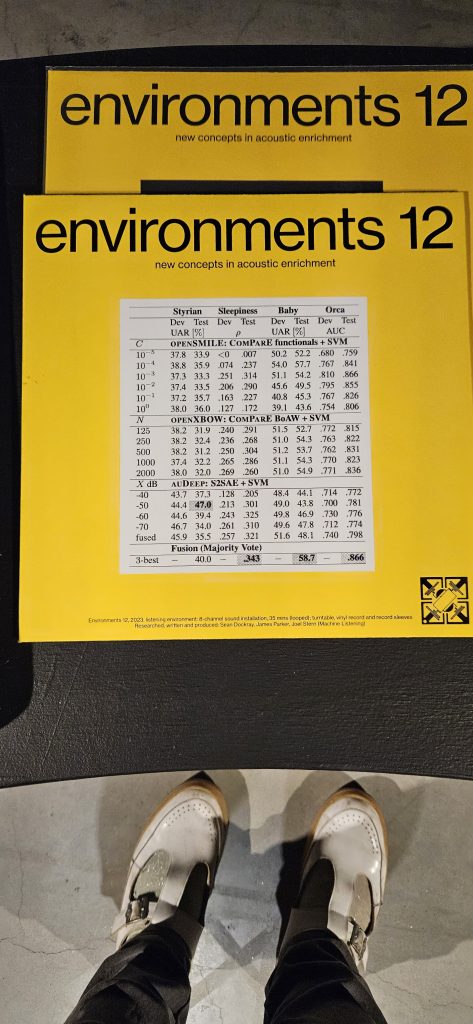
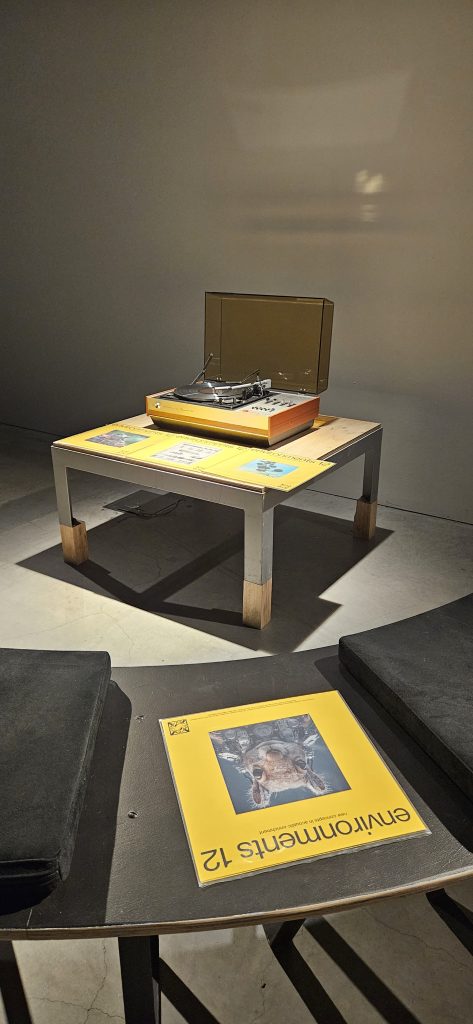
Install shots of Environments 12, 2023. listening environment: 8-channel sound installation, 35 mins (looped); turntable, vinyl record and record sleeves Researched, written and produced: Sean Dockray, James Parker, Joel Stern (Machine Listening)
Joel Stern thankfully sent me a package of the work with a crisp wav file of the 12th record a vinyl offering to the set of 11 acoustic journeys. It was helpful to again listen to the track because, in the Design Hub exhibition space itself the acoustics didn’t do the work justice.
Generally, the group show combines artistic research into issues of sovereignty, ecological field observations, and environmental humanities sensorial dimensions of space, which have been increasing in interest. Conceptually, I found visiting the showcase, the curatorial premise of ‘Wild Hope’ seemed fragmentary and contiguous to the point of ‘woke washing’ in some cases.
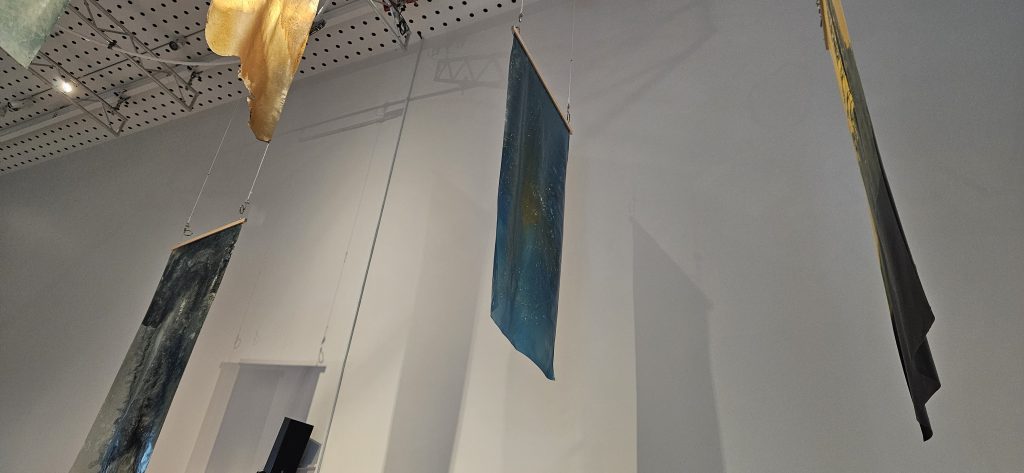
Incongruously, I encountered the number of works overwhelming, and their particular layout spatially challenging my perceptual apparatus. Hearing the curators/artists’ talk on Friday, 25 August 2023, for instance, and the reliance on Jessie French’s artworks, a series of striking algal polymer sheets on the creative technologist who wasn’t in the country, etc., though commenting on supply chain sustainability, led me to wonder about the curatorial decisions and discussions in the lead-up to the show.
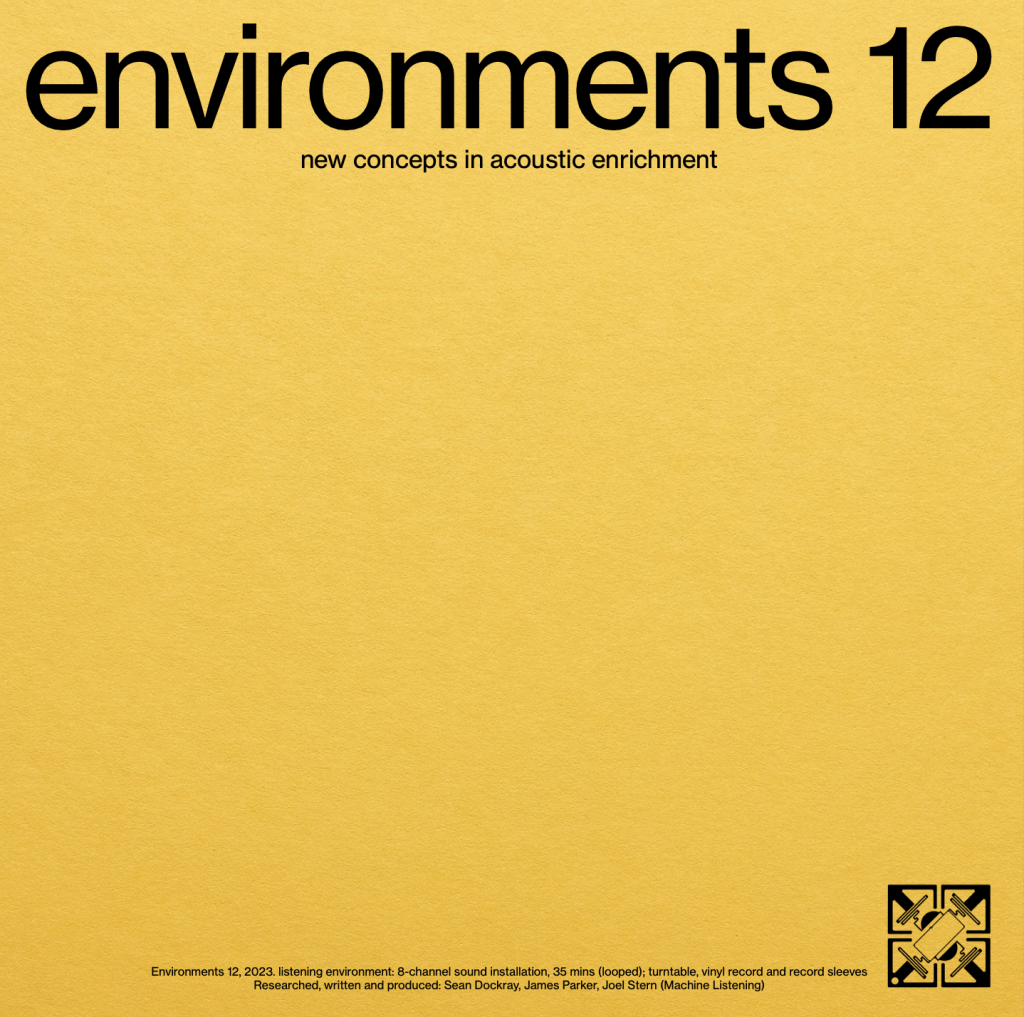
Environments 12, 2023. record sleeve cover by Sean Dockray, James Parker, Joel Stern (Machine Listening)
The record cover states that ‘Environments 12’ was commissioned for the exhibition Wild Hope at RMIT Design Hub 2023, and I am aware that the team producing the work has been in conversation about their object of artistic research for numerous years. To be fair, as another counterpoint to this interpretation, the anticipatory nature of the experience of the gallery in reflection of the urgent issue of the environmental collapse, one could claim the curatorial intention then performed itself sufficiently. Echoing the later premise “Experience a world where imagination and urgency unite, where art, research and design become agents for change to address the climate crisis”. As a snapshot of contemporary Australian art addressing ‘Wild Hope: Conversations for a Planetary Commons’, one might expect more of an assortment of plurally produced and varied resources; revealing insights and capabilities.
Nevertheless, I left the show concerned about why yet again it is artists, with all our imaginary prospects seem to be the ones who are tasked to clean up deprived systems of wretched necro political decision-making consequences.
To conclude in a reflective and promising manner about the role of artists, curator José Da Silva contends ‘I think it’s important to value artists on their own terms without expecting them to do the work that scientists and governments need to do” in relation to the conceptual theme of Inner Sanctum’ for the 18th Adelaide Biennial of Australian Art in 2024. < watch this space>
